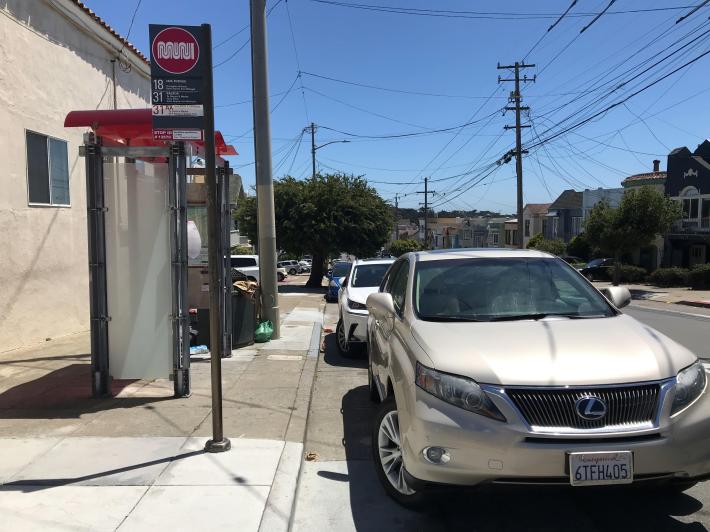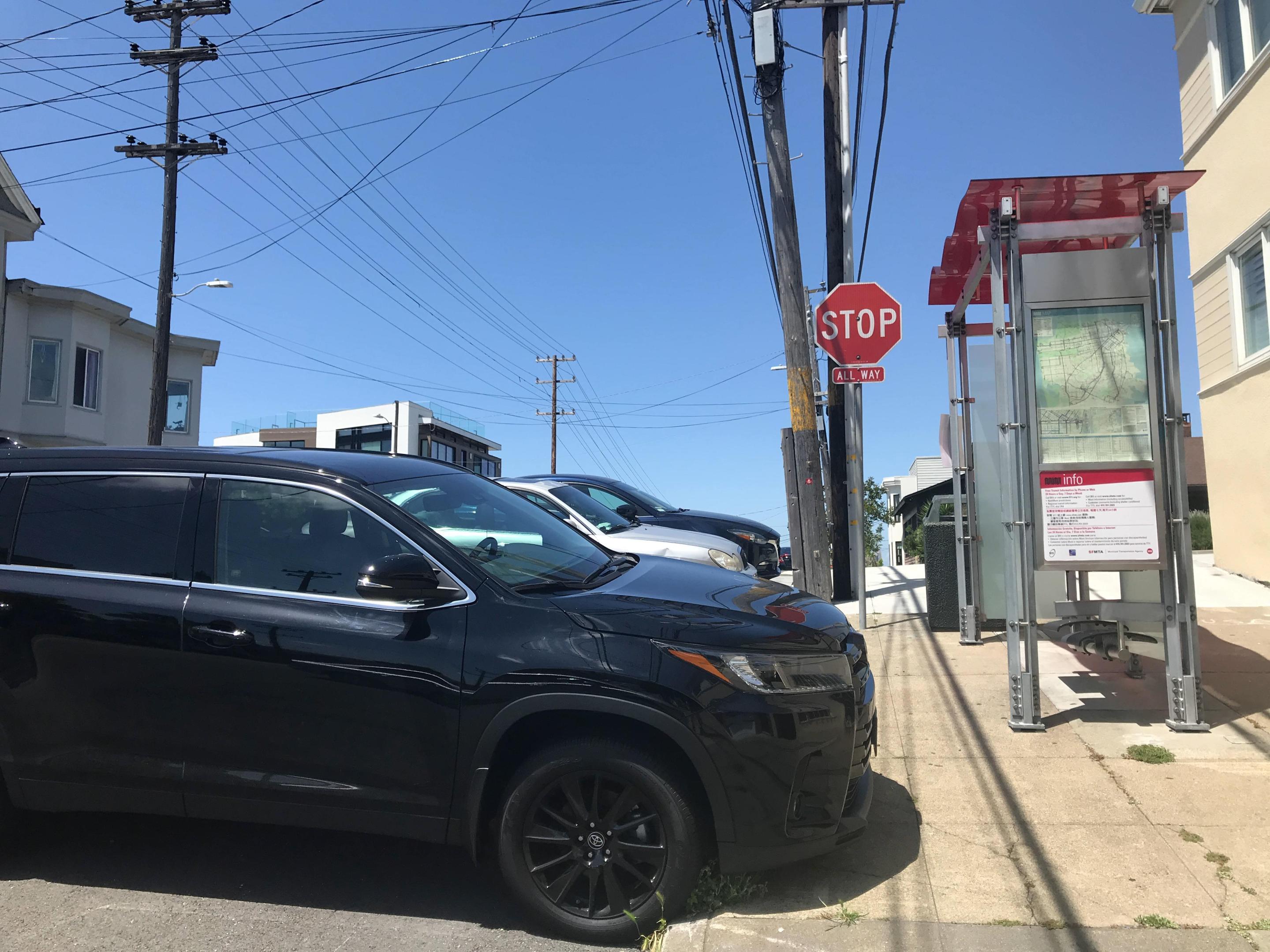The San Francisco Board of Supervisors resolved unanimously this week to stop allowing motorists to park in bus stops. From a release from D-5 Supervisor Dean Preston's office:
The Resolution calls for the MTA to promote accessibility at about one-third of their 3,000 bus stops that are obstructed by on-street parking. Currently, these bus stops obstruct pedestrian access to the bus and prevent buses from pulling into the bus stop, raising major accessibility concerns.
The resolution tasks SFMTA with figuring out how to "promote accessibility," added Preston in a statement, at their nearly 1,000 bus stops that are currently obstructed by on-street parking. This might include adding red paint or quick-build bulb-outs to allow unobstructed front-door boarding.
"This is long overdue," wrote the San Francisco Transit Riders Cat Carter, in an email to Streetsblog. "We're thankful for the leadership from Supervisor Preston and the Board of Supervisors in calling for removing parking in favor of space for transit and transit riders. Bus stops hidden by parked cars and marked with a splash of yellow paint are not acceptable."
The resolution by the Supes was sparked by a study done by UC Berkeley's Marcel Moran, who started to notice the subpar quality of many of the city's bus stops during the shelter-in-place period of the pandemic. "It was just comical the way the stops were obstructed by on-street parking in Potrero Hill, even by angled parking," he told Streetsblog in a phone interview. "You can't believe that's how the stop is supposed to function."
Indeed, it is imponderable that in a supposedly transit-first city bus riders are supposed to somehow filter through rows of parked cars to catch the bus. So Moran started filling his days walking around the city logging the environment--and the amount of parking--around city bus stops. He wore out several pairs of sneakers and logged about 100 stops a day. He found there were "three big takeaways, two-thirds of stops don't have seating, two-thirds don't have shelters, and one-third are obstructed by on-street parking."

He also found spatial disparities around the city. "Stops on the north half of city are much better than on the southern end."
The resulting study, published last July, attracted the attention of several journalists, including Christina Campodonico of the San Francisco Standard (formerly Here/Say Media). "Moran’s analysis did find that bus stops in census tracts with a higher than average share of white residents were more likely to feature seating, shelter and clear curbs in comparison to tracts with higher than average populations of people of color," wrote Campodonico.
All of which attracted the attention of Supervisor Preston, who penned the resolution. "This is a big step forward. Much like daylighting efforts to protect pedestrian safety, there are certain steps we as a City just need to take to live up to our Transit First and Vision Zero mandates. We cannot continue to allow private vehicles to park in active bus stops and obstruct Muni access. It’s that simple," said Supervisor Preston in a prepared statement.
Of course, now starts the hard part--implementing a plan to get those cars out of those bus stops around the city. And, in Streetsblog's view, the real problem is going to be making sure those legal parkers aren't just replaced with illegal parkers, meaning red paint alone won't be enough. It's going to require full-length boarding islands, which is on the table, assuming SFMTA doesn't compromise as they have in the past when the invariable blow-back starts. See the Tweet below characterizing what usually happens when such firm resolutions are put into practice:
This is a light rail station in San Francisco, where the city charter prioritizes transit. Riders in the second train car have to step into the street to exit. It was built this way so that someone’s ability to store their Honda on public property for 40 cents a day is preserved. pic.twitter.com/mFPP5oeDIy
— Christof Spieler (@christofspieler) December 29, 2019
Streetsblog will continue to follow this story. "Making bus stops safe, attractive, and easy to use for everyone is how we can really put transit, and transit riders, first," said Carter.





